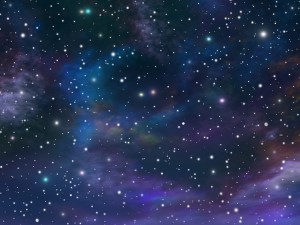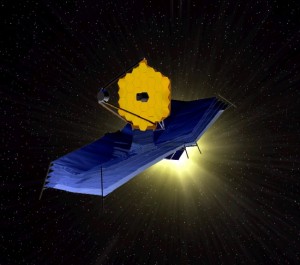 My son Jake and I hopped a cab from George Washington University to an apartment on the other side of DC whose former occupant, we later learned, was Lena Horne. That set the tone for the evening which started with a bang. Nobel Laureate in physics Dr. John C. Mather gave a lively talk about his role in discovering remnants of the Big Bang that proved the theory beyond any doubt, and led to his earning the most esteemed award in science. He described his book to us, The Very First Light – The True Inside Story of the Scientific Journey Back to the Dawn of the Universe, which he promised had intrigue, scientific adventure and even “people behaving badly.” I quickly grabbed a copy.
My son Jake and I hopped a cab from George Washington University to an apartment on the other side of DC whose former occupant, we later learned, was Lena Horne. That set the tone for the evening which started with a bang. Nobel Laureate in physics Dr. John C. Mather gave a lively talk about his role in discovering remnants of the Big Bang that proved the theory beyond any doubt, and led to his earning the most esteemed award in science. He described his book to us, The Very First Light – The True Inside Story of the Scientific Journey Back to the Dawn of the Universe, which he promised had intrigue, scientific adventure and even “people behaving badly.” I quickly grabbed a copy.
Thus began the “Celebration of Scientific Citizenship,” June 7, the occasion of the 50th Anniversary of the Niels Bohr Library and Archives and the Center for History of Physics, which I’ve mentioned in an earlier post is the recipient of donations made in my father’s name, as he’d wished. My father, Lawrence Cranberg, contributed many documents from his physics career to the Niels Bohr library and he greatly valued it as a vital source for scientists and students. Later in life, he invented a unique fireplace grate that Time magazine called “The Physicist’s Fire” – the subject of this blog and website.
I wish Dad could have been with us that evening, although in a way, he was. Nearly everyone we spoke to knew my father or was familiar with his work or his writing.
Dad would have enjoyed meeting Dr. Mather, an astrophysicist whose scientific focus is light years from that of a nuclear physicist: the vast reaches of outer space vs. the nucleus of an atom right under your nose. I later told Dr. Mather that his desire for Congress to be comprised of more scientists was also one of my dad’s favorite themes. Mather and my father also shared a keen interest in educating and inspiring the next generation of physicists. The Nobel Laureate generously contributed much of his prize winnings to endow the Mather Intern program. “What else was I going to do with it?” he said. Interns in the program were in attendance that evening. I spoke with a few of them – an impressive bunch – and when I asked where they were from, I was glad to see a very broad range of colleges represented.
Dr. Mather’s future endeavors promise to be as exciting as his past accomplishments. He is Senior Project Scientist for the James Webb space telescope – think mega-Hubble. Its primary mirror, by Mather’s estimation, will be larger than Lena Horne’s former living room. But don’t worry – it folds. And when it unfolds in outer space, it will be a million miles from earth. Talk about a giant leap for mankind. The Webb, according to NASA, “will examine every phase of our history, from the first galaxies to form after the Big Bang, to the formation and evolution of planetary systems capable of supporting life, to the history of our own Solar System.” Dr. Mather even stated the possibility of the massive telescope leading to the discovery of alien life forms.
is Senior Project Scientist for the James Webb space telescope – think mega-Hubble. Its primary mirror, by Mather’s estimation, will be larger than Lena Horne’s former living room. But don’t worry – it folds. And when it unfolds in outer space, it will be a million miles from earth. Talk about a giant leap for mankind. The Webb, according to NASA, “will examine every phase of our history, from the first galaxies to form after the Big Bang, to the formation and evolution of planetary systems capable of supporting life, to the history of our own Solar System.” Dr. Mather even stated the possibility of the massive telescope leading to the discovery of alien life forms.
Very cool. 400 degrees below zero cool, in fact. That’s the temperature (farenheit) the mirror will be cooled to with the help of sun shields the size of a tennis court. Mather’s mother of all telescopes will be launched in 2018. “But we don’t have an exact date,” he said. That’s okay, the universe will wait.
With our thoughts firmly in the heavens and beyond, we boarded elevators and climbed stairs to the rooftop where earth’s atmosphere provided a magnificent show in collaboration with the setting sun. Bathed in twilight, Washington was laid out before us on all sides with its namesake monument pointing skyward – a reminder of cosmic discoveries past and future. Our hosts, Dr. Marc Brodsky and his wife Vivian, had thought of everything.
The evening also evoked physics luminaries who preceded Dr. Mather. A silent auction included photographic prints from the American Institute of Physics Emilio Segre Visual Archives, featuring images of Bohr, Fermi, Einstein, Dirac, Feynman, Weisskopf, Mayer and Born. I was thrilled to win two – perfect for the physics fans on my gift list – while benefiting Dad’s favorite cause. There were also works of fine art, each with a connection to science, including one in a series of bold, large-scale paintings of high energy physics equipment by Kim Dylla – fellow daughter of a physicist.
The Celebration of Scientific Citizenship was also a celebration of scientific friendship. Jake and I didn’t know a soul when we walked in, but felt like we’d spent an evening with old friends by the time we left. The physicists (present and future) and the AIP’s CEO, Fred Dylla and his staff were more than welcoming to a student of epidemiology. (I also noted Jake has cocktail party skills of which I was unaware.)
I was pleased to learn that this event will mark a new tradition for the American Institute of Physics, and I hope it will grow to include many more people in the physics community and beyond.
You don’t have to be a physicist to appreciate and support the Niels Bohr Library and Archives and the Center for the History of Physics. All that’s required is a curiosity about the origins of the universe and a desire for a greater understanding of the laws of physics that govern everything we experience and observe.
Warmest Regards,
Nicole Cranberg













Thank you, Nicole, for a wonderful momento from the evening. It was a delight meeting you and Jake. I look forward to seeing you at AIP and will gladly arrange a tour of the Niels Bohr Library & Archives.
Greg Good
The Spencer Weart Director, Center for History of Physics